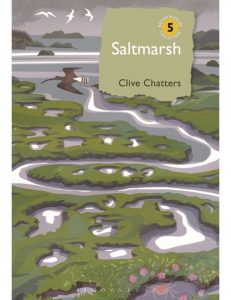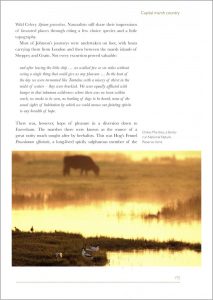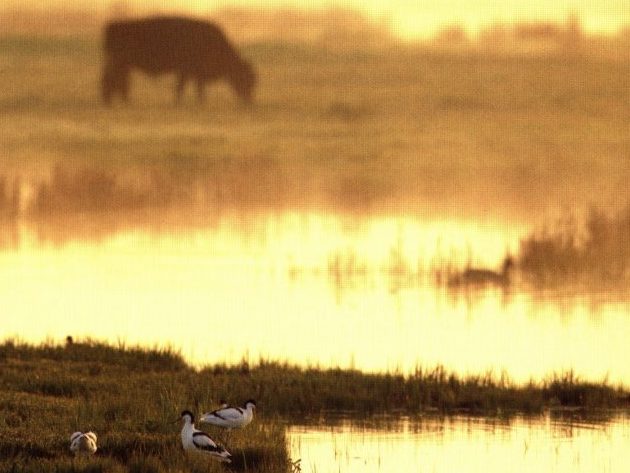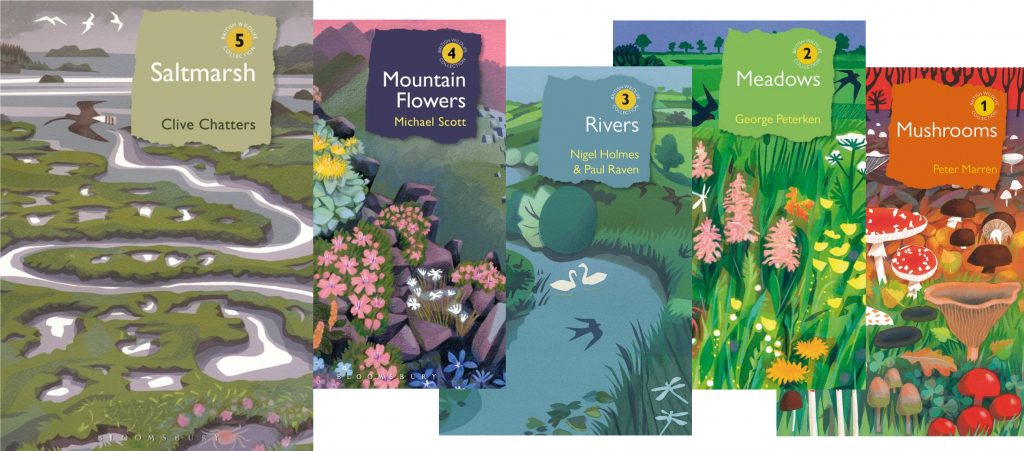Saltmarsh is the 5th and latest addition to the British Wildlife Collection. In this passionate and eloquent book, Clive Chatters celebrates some of our most beautiful and exceptional saltmarshes, bringing to life this mysterious and ever-changing habitat. To celebrate its publication, we recently chatted to Clive about the book and about conservation of saltmarshes in the UK.

Your book is incredibly well-researched and is packed with fascinating details on the history, ecology and management of saltmarshes in the UK. However, if you were to be faced with an audience of people who know absolutely nothing about saltmarshes, their beauty or their value – what are the key things you would tell them to inspire and pique their interest?
Talking about Saltmarshes is no substitute to joining the audience on a short walk and experiencing the landscape first-hand. In a modest stroll one can share the reek of the mud and the companionable cry of waders. The breeze will bring minute particles of brine to our lips, a piquant introduction to a habitat so alien from our own. I would hope that such a stroll would leave people wanting more.
 Some of the most enjoyable parts of the book for me were the historical accounts of the saltmarshes; finding out how both common people and nobles, together with the shifting political framework throughout the ages, influenced the landscape of our country. Is history a particular passion of yours and do you think that an understanding of a region’s history is important for current and future conservation decisions?
Some of the most enjoyable parts of the book for me were the historical accounts of the saltmarshes; finding out how both common people and nobles, together with the shifting political framework throughout the ages, influenced the landscape of our country. Is history a particular passion of yours and do you think that an understanding of a region’s history is important for current and future conservation decisions?
Our encounters with wildlife are just snatched insights into the lives of countless other species. Britain’s landscape has co-evolved with people, we are a part of our nation’s native fauna. By understanding how that relationship has developed we can better understand our place in the world and so appreciate our responsibility for the consequences of our actions.
 To quote from the end of your book, “all habitats and landscapes are subject to change”. However, saltmarshes are arguably under the influence of a greater range of factors in comparison to many other habitat types; with short- and long-term fluctuations in tides, sea level rise and land subsidence in addition to the inevitable human impacts of agriculture and land development. For these reasons, do you think that saltmarshes are uniquely difficult to provide a conservation plan for?
To quote from the end of your book, “all habitats and landscapes are subject to change”. However, saltmarshes are arguably under the influence of a greater range of factors in comparison to many other habitat types; with short- and long-term fluctuations in tides, sea level rise and land subsidence in addition to the inevitable human impacts of agriculture and land development. For these reasons, do you think that saltmarshes are uniquely difficult to provide a conservation plan for?
Nature conservationists are asked to master a host of interactive challenges. There are common themes covering all habitats and species that focus on safeguarding interconnected landscapes and securing the wherewithal to allow ecological processes to progress unimpeded. In saltmarshes this usually means making spaces for tides and sediments to move and for the vegetation to develop in the presence of large grazing animals. Saltmarshes are particularly demanding as they shift across the landscape at a rate that can outpace our ability to manage change. If we fail then human life and property are at risk and the diversity of the natural world is diminished.
 As a long-term naturalist with a rich and varied career, what do you think (or hope) will be your most important legacy to conservation?
As a long-term naturalist with a rich and varied career, what do you think (or hope) will be your most important legacy to conservation?
All any of us can do is hope to leave Britain’s wildlife in better heart than when we first grew to know it. To me success is measured by rejuvenating conditions in which wildlife can cope with whatever changes are yet to come.
The research and writing of Saltmarsh must have been an immense undertaking. I’m curious what is next for you? Are there plans afoot for further books?
I enjoy writing as it helps to marshal the results of my curiosity into a semblance of order. If others enjoy what I’ve written then there are many more stories to tell.
Saltmarsh was published as part of the British Wildlife Collection; a series of books, each covering an individual aspect of British natural history. From the first publication in 2012, they have covered such diverse topics as mushrooms, meadows and mountain flowers, and books have been written by some of Britain’s finest writers and experts in their field. Filled with beautiful images, these wide-ranging and well-researched titles are a joy for any naturalist who is passionate about British wildlife and landscapes.


